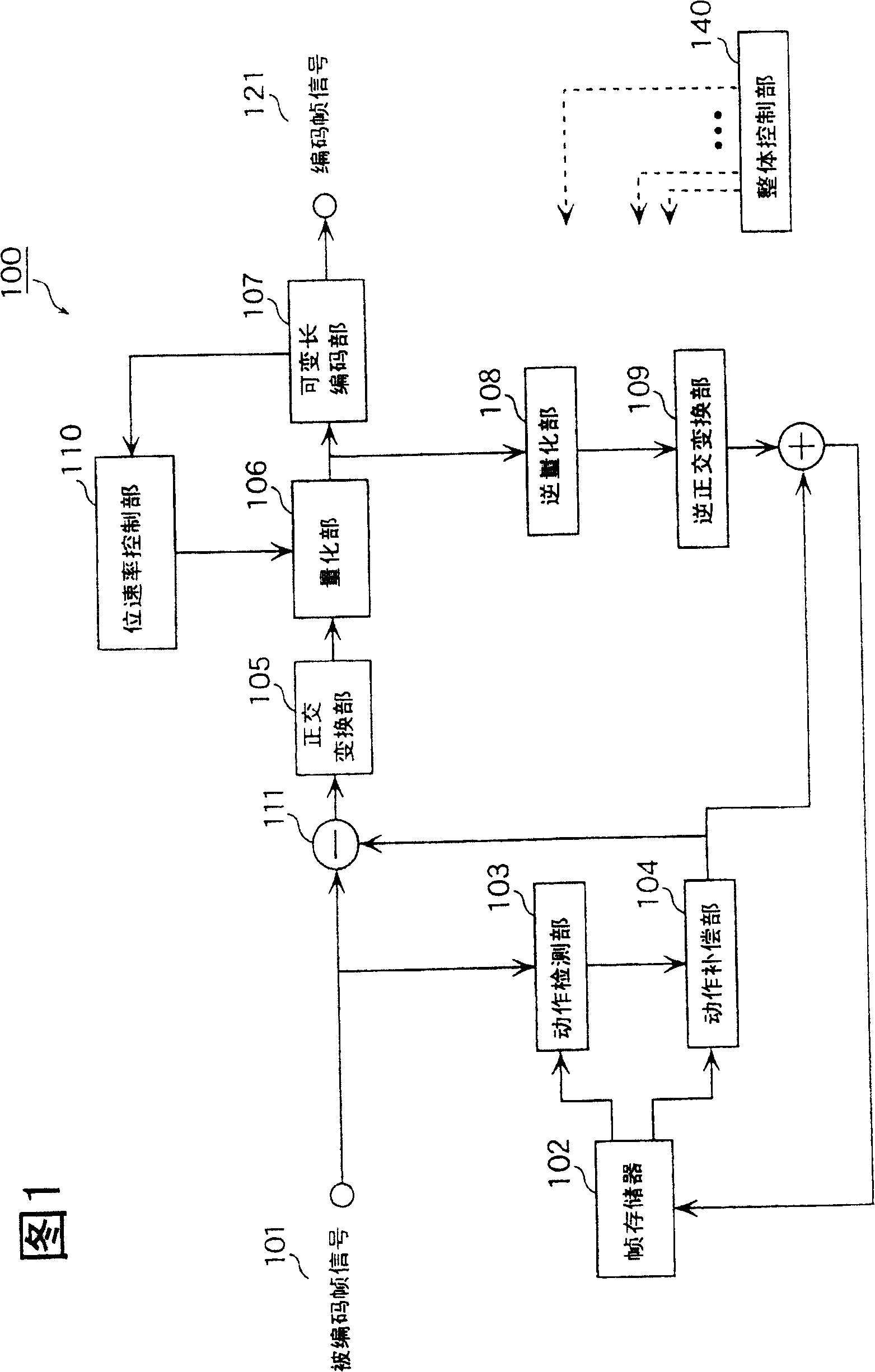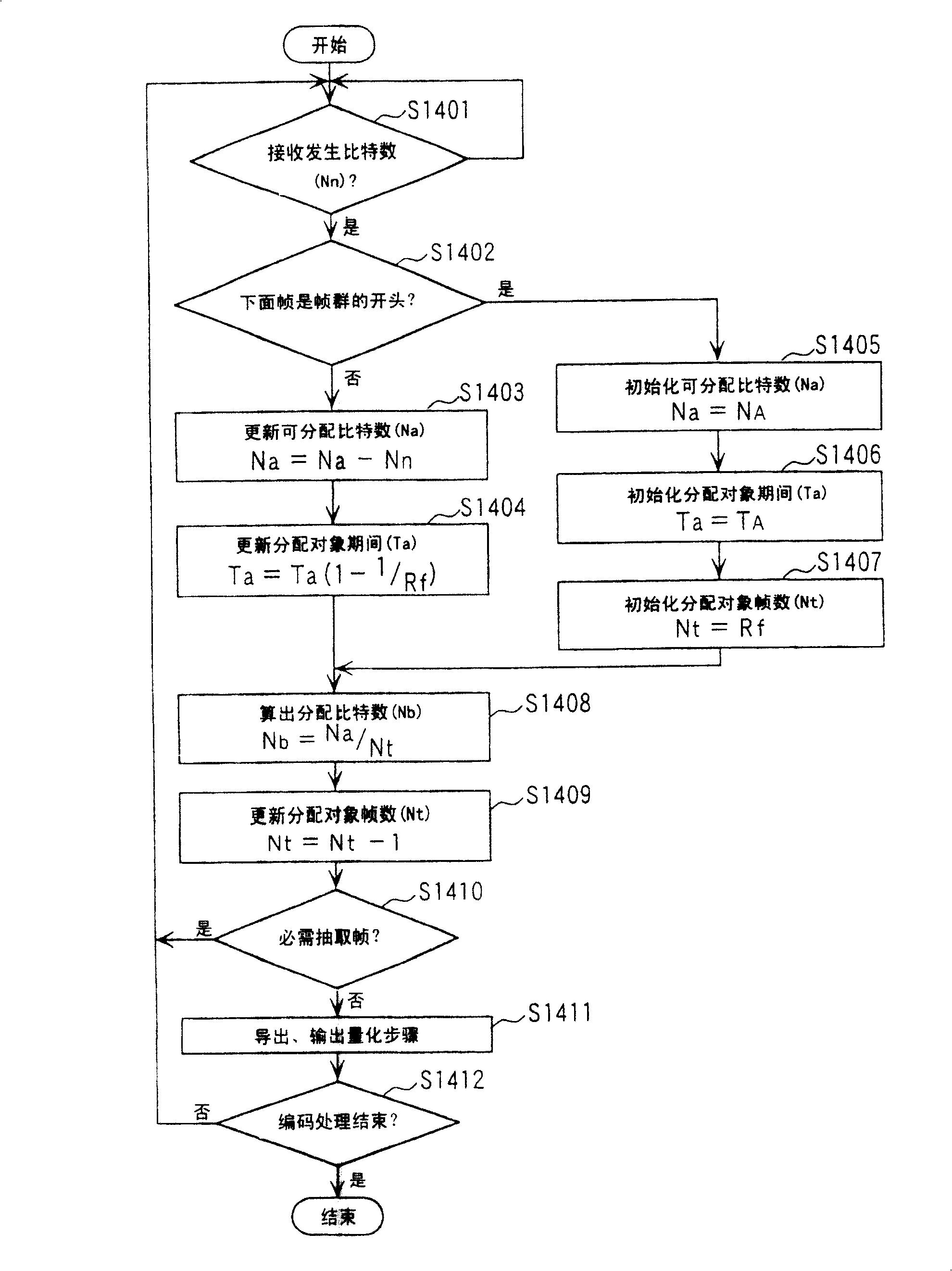Image coding apparatus and image coding method
An image coding and coding technology, applied in the field of image coding technology, can solve problems such as increased frame rate and frame interval, deteriorated image quality, and inflexible actions
- Summary
- Abstract
- Description
- Claims
- Application Information
AI Technical Summary
Problems solved by technology
Method used
Image
Examples
Embodiment 1
[0081] FIG. 7 is a block diagram showing the functional configuration of the image encoding device 10 according to Embodiment 1. Referring to FIG. The image encoding device 10 can perform encoding for higher-quality image reproduction by keeping the bit rate constant when observed for a predetermined length of time (for example, 1 second) and suppressing local bit rate fluctuations.
[0082] The image encoding device 10 is composed of a frame memory 102, a motion detection unit 103, a motion compensation unit 104, an orthogonal transformation unit 105, a quantization unit 106, a variable length coding unit 107, an inverse quantization unit 108, an inverse orthogonal transformation unit 109, and a frame extraction unit. Section (interlude section) 20, rate control section 30 and overall control section 40 constitute.
[0083] The frame extracting unit 20 determines encoding / non-encoding of the frame signal 101 to be encoded input within a certain period, and notifies the rate c...
Embodiment 2
[0122] Fig. 19 is a block diagram showing the functional configuration of an image coding device 2100 according to the second embodiment. The image coding apparatus 2100 considers a frame group composed of conventional double-digit frames as shown in FIG. 11 of the first embodiment above, and controls the quantization step or frame extraction to suppress sudden fluctuations in the bit rate or frame rate. Perform high-quality encoding.
[0123] The image coding device 2100 includes a frame extraction unit 2101, a frame memory 102, a motion detection unit 103, a motion compensation unit 104, an orthogonal transformation unit 105, a quantization unit 106, a variable length coding unit 107, a transmission buffer 2108, and an inverse quantization unit 2109. , an inverse orthogonal transform unit 2110 , a difference unit 2111 , an adder 2112 and a frame rate control unit 2113 .
[0124] The frame extraction unit 2101 performs extraction processing on each frame of an image signal i...
Embodiment 3
[0167] Fig. 35 is a block diagram showing the functional structure of the image encoding device 4100 in the third embodiment. The image encoding device 4100 implements more suitable encoding by using the variable bit rate method in the image encoding device 10 of the first embodiment and the variable frame rate method in the image encoding device 2100 in the second embodiment.
[0168] As shown in FIG. 35 , the image encoding device 4100 has the same functional structure as the image encoding device 10 in the first embodiment except for the transmission buffer 2108 , the frame rate control unit 4113 and the frame extraction unit 4116 . In addition, below, the same code|symbol is attached|subjected to the same part as the functional structure in the said Example 1 or Example 2, and description is abbreviate|omitted.
[0169] The frame rate control unit 4113 has only the function of generating extraction information among the functions of the frame rate control unit 2113 of the ...
PUM
 Login to View More
Login to View More Abstract
Description
Claims
Application Information
 Login to View More
Login to View More - R&D
- Intellectual Property
- Life Sciences
- Materials
- Tech Scout
- Unparalleled Data Quality
- Higher Quality Content
- 60% Fewer Hallucinations
Browse by: Latest US Patents, China's latest patents, Technical Efficacy Thesaurus, Application Domain, Technology Topic, Popular Technical Reports.
© 2025 PatSnap. All rights reserved.Legal|Privacy policy|Modern Slavery Act Transparency Statement|Sitemap|About US| Contact US: help@patsnap.com



